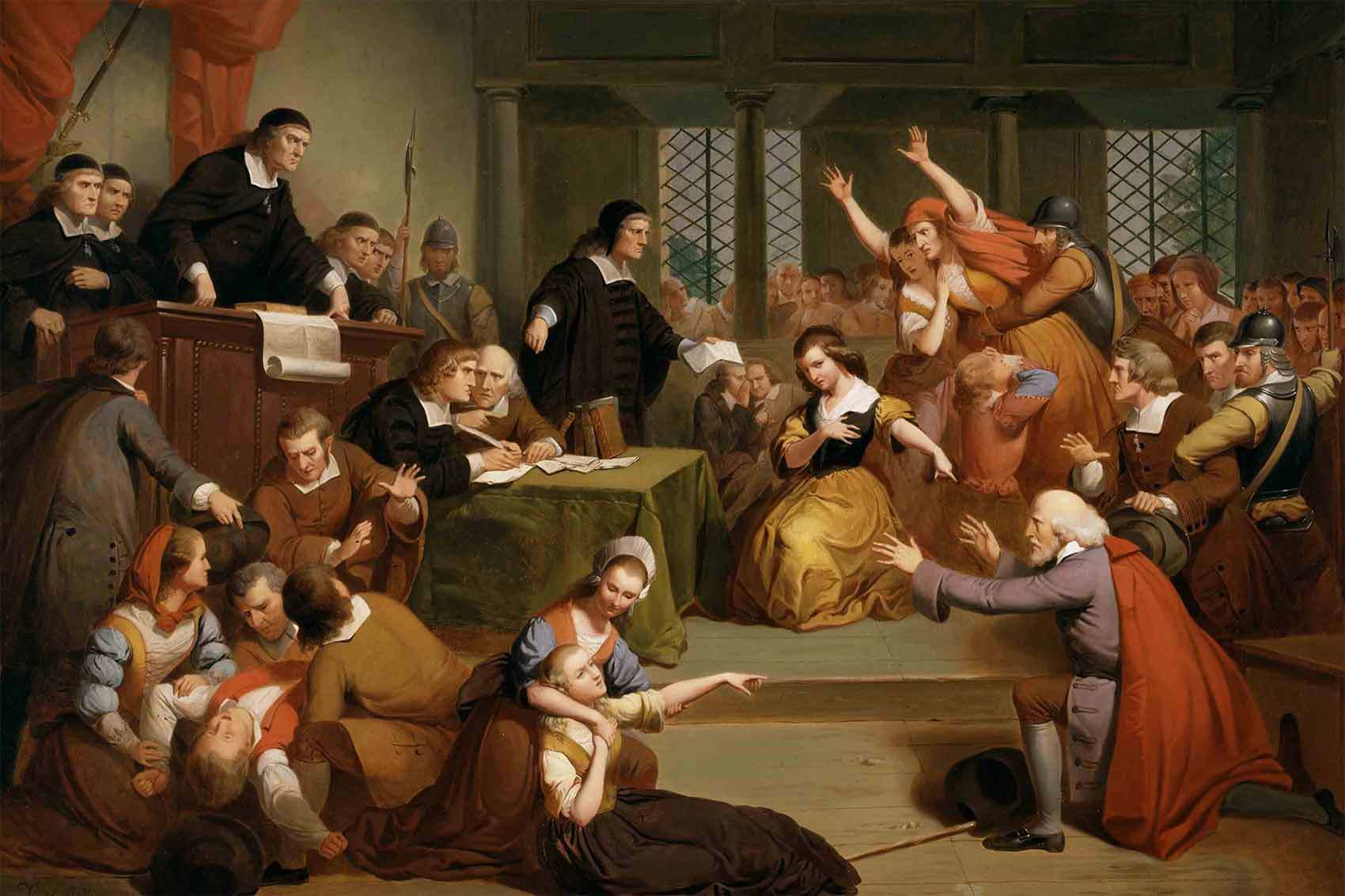
What caused the Salem Witch Trials? The Salem Witch Trials of 1692 were a dark chapter in American history, driven by a mix of fear, superstition, and social tensions. Mass hysteria played a significant role, fueled by religious fervor and the belief in the supernatural. Economic strife and personal vendettas also contributed, as neighbors turned against each other to settle old scores. The Puritanical society of Salem, with its strict moral codes, created an environment ripe for accusations. Ergot poisoning, a theory suggesting that a fungus in rye caused hallucinations, adds another layer of complexity. Understanding these causes helps us grasp how a community could spiral into chaos, leading to the tragic execution of 20 innocent people.
Key Takeaways:
- The Salem Witch Trials were caused by religious zealotry, social tensions, psychological factors, and the influence of key figures, leading to mass hysteria and unjust legal practices.
- The trials serve as a cautionary tale, emphasizing the importance of critical thinking, fairness in the legal system, and the dangers of mass hysteria and abuse of power.
The Salem Witch Trials: A Glimpse into the Past
The Salem Witch Trials of 1692 remain one of the most infamous events in American history. These trials led to the execution of 20 people, mostly women, and the imprisonment of many more. Understanding the causes behind these trials helps us grasp the complexities of human behavior and societal pressures.
Religious Zealotry
Religious fervor played a significant role in the Salem Witch Trials. The Puritans, who settled in Massachusetts, had strict religious beliefs that influenced their daily lives and governance.
- Puritan Beliefs: The Puritans believed in predestination and the constant presence of the devil. This made them highly suspicious of any behavior that deviated from their norms.
- Biblical Justification: The Bible, particularly the Old Testament, was often cited to justify the persecution of witches. Verses like Exodus 22:18, "Thou shalt not suffer a witch to live," were taken literally.
- Fear of the Devil: The Puritans believed that the devil was actively working to corrupt their community. This fear made them vigilant and quick to accuse others of witchcraft.
Social and Economic Tensions
Beyond religious factors, social and economic tensions also contributed to the hysteria. Salem was a community under stress, and these pressures manifested in dangerous ways.
- Land Disputes: Many accusations of witchcraft were tied to land disputes. Neighbors would accuse each other to gain control over valuable property.
- Economic Inequality: The gap between the wealthy and the poor in Salem created resentment. Accusations often targeted those who were economically vulnerable.
- Family Feuds: Long-standing family rivalries played out in the courtroom. Accusations were sometimes a way to settle old scores.
Psychological Factors
The psychological state of the community also played a crucial role. Fear, paranoia, and mass hysteria spread quickly in such a tightly-knit society.
- Mass Hysteria: The fear of witchcraft created a domino effect, where one accusation led to another. This mass hysteria was fueled by the close-knit nature of the community.
- Stress and Anxiety: The constant threat of Native American attacks and harsh living conditions added to the community's stress, making them more susceptible to paranoia.
- Isolation: Salem's relative isolation from other communities made it easier for fear and suspicion to fester without outside intervention.
The Role of Key Figures
Certain individuals played pivotal roles in escalating the witch trials. Their actions and decisions had lasting impacts on the course of events.
- Reverend Samuel Parris: The minister of Salem Village, Parris, was a fervent believer in witchcraft. His sermons and actions fueled the hysteria.
- Tituba: Parris's slave, Tituba, was one of the first to be accused. Her confession, likely coerced, set off a chain reaction of accusations.
- Judge Samuel Sewall: One of the judges presiding over the trials, Sewall later publicly apologized for his role, highlighting the deep regret felt by some involved.
Legal and Judicial Practices
The legal framework and judicial practices of the time also contributed to the trials' severity and scope.
- Spectral Evidence: Testimonies based on dreams and visions were considered valid evidence. This type of evidence was highly subjective and unreliable.
- Guilty Until Proven Innocent: The accused were often presumed guilty, and the burden of proof was on them to prove their innocence.
- Use of Torture: Torture was sometimes used to extract confessions, leading to false admissions of guilt.
The Influence of Previous Witch Hunts
The Salem Witch Trials were not an isolated event. They were influenced by previous witch hunts in Europe and other parts of the American colonies.
- European Witch Hunts: The witch hunts in Europe, which resulted in thousands of executions, set a precedent that influenced the Salem trials.
- Connecticut Witch Trials: Earlier witch trials in Connecticut provided a model for how to conduct such proceedings.
- Malleus Maleficarum: This infamous witch-hunting manual, written in the 15th century, was widely read and influenced the methods used in Salem.
The Impact of Natural Events
Natural events and environmental factors also played a role in the hysteria. These events were often interpreted as signs of divine displeasure or witchcraft.
- Harsh Winters: The winter of 1691-1692 was particularly harsh, leading to crop failures and food shortages. This added to the community's stress and fear.
- Ergot Poisoning: Some historians believe that ergot poisoning, caused by a fungus that grows on rye, may have contributed to the hallucinations and strange behavior of the accusers.
- Comet of 1680: The appearance of a comet in 1680 was seen as an ominous sign, adding to the sense of impending doom.
The Role of Gender
Gender dynamics played a significant role in the witch trials. Women, particularly those who did not conform to societal norms, were more likely to be accused.
- Misogyny: Many of the accused were women who did not fit the traditional roles of wife and mother. Misogyny played a significant role in their persecution.
- Widows and Spinsters: Women who were widowed or unmarried were particularly vulnerable to accusations, as they were seen as outsiders.
- Midwives and Healers: Women who practiced traditional healing or midwifery were often accused of witchcraft, as their knowledge was seen as threatening.
The Aftermath and Legacy
The Salem Witch Trials had a lasting impact on American society and legal practices. The events led to changes in how justice was administered and influenced future generations.
- Public Apologies: In 1697, the Massachusetts General Court declared a day of fasting and soul-searching for the tragedy of Salem. Many involved later expressed regret.
- Compensation to Victims: In 1711, the colony passed a bill restoring the rights and good names of those accused and granted financial restitution to their heirs.
- Legal Reforms: The trials led to changes in the legal system, including the prohibition of spectral evidence and the right to legal representation.
Modern Interpretations
Modern historians and scholars continue to study the Salem Witch Trials, offering new interpretations and insights into the causes and consequences.
- Feminist Perspectives: Some scholars view the trials as a manifestation of patriarchal control and the suppression of women.
- Sociological Analysis: Sociologists examine the trials as a case study in mass hysteria and the dangers of scapegoating.
- Psychological Theories: Psychologists explore the mental states of both the accusers and the accused, offering insights into the human psyche.
Cultural Impact
The Salem Witch Trials have left an indelible mark on American culture, inspiring countless works of literature, film, and art.
- Arthur Miller's "The Crucible": This famous play, written in 1953, uses the Salem Witch Trials as an allegory for McCarthyism.
- Books and Movies: Numerous books and movies have been inspired by the trials, keeping the story alive in popular culture.
- Tourism: Salem, Massachusetts, has become a popular tourist destination, with many attractions dedicated to the history of the witch trials.
Lessons Learned
The Salem Witch Trials serve as a cautionary tale about the dangers of mass hysteria, scapegoating, and the abuse of power.
- Critical Thinking: The trials highlight the importance of critical thinking and skepticism in the face of fear and uncertainty.
- Justice and Fairness: They remind us of the need for a fair and just legal system that protects the rights of all individuals.
The Lasting Impact of the Salem Witch Trials
The Salem Witch Trials left a mark on American history. They showed how fear and superstition could lead to tragic outcomes. Over 200 people were accused, 20 were executed, and many lives were ruined. These trials remind us of the dangers of mass hysteria and the importance of due process.
Today, Salem embraces its past, drawing visitors eager to learn about this dark chapter. Museums, reenactments, and historical sites keep the memory alive. The trials also influenced literature, theater, and popular culture, serving as a cautionary tale.
Understanding the causes of the Salem Witch Trials helps us recognize the importance of justice and rational thinking. It’s a lesson that remains relevant, urging us to question and seek truth rather than succumb to fear. The legacy of Salem continues to teach and warn, ensuring such a tragedy never repeats.
Frequently Asked Questions
Was this page helpful?
Our commitment to delivering trustworthy and engaging content is at the heart of what we do. Each fact on our site is contributed by real users like you, bringing a wealth of diverse insights and information. To ensure the highest standards of accuracy and reliability, our dedicated editors meticulously review each submission. This process guarantees that the facts we share are not only fascinating but also credible. Trust in our commitment to quality and authenticity as you explore and learn with us.


